The owner of this 1974 Chevrolet Vega GT Kammback describes it as one of the nicest Vegas left on the planet. When you work your way through the photos that he supplies, it is hard to argue that point. It has been garaged for its entire life and is about as clean as you could ever hope to find. He had planned on performing a V8 conversion but didn’t have the heart to molest such a spotless vehicle. Instead, he has chosen to list it for sale here on eBay. It is located in Woodland, California, and has attracted an incredible 31 bids at this stage. This has pushed the price along to $7,177, and the reserve has been met.
The Kammback is finished in Cosworth Silver, and apart from some minor touch-up work, the paint is said to be original. It is this fact that makes the Vega seem special to me. I think that we’ve all seen older cars that wear silver paint, and it has become quite oxidized, patchy, and dull. That hasn’t been the fate of this car because the paint still shines beautifully. There is no evidence of any chips or scratches, while the panels are as straight as an arrow. The chrome and trim are just as nice as the panels and paint, while the glass appears to be flawless. The owner has managed to secure some NOS badges and other parts, and while these aren’t required, it is always nice to have some parts for a classic car squirreled away in case they are needed in the future. The wheels fitted to the Vega are as immaculate as the rest of the exterior, and they give the vehicle a purposeful look.
The beauty of this Kammback is more than just skin deep because the owner supplies some photos of the wagon’s underside, and it is impressive. If the Vega was renowned for one thing, it was its ability to rust. These problems were particularly prevalent in early examples, but none were immune from the tin worm. This Vega has a few factors working in its favor that have allowed it to remain rust-free. The first is that it has spent its entire life in sunny California. The second is that it has been garaged since new, and that’s why you won’t find a spot of rust anywhere.
I admit that I was bracing myself when we got to the interior photos because the trim and upholstery in the Vega was another area that is prone to deterioration. Fear not, because this looks to be close to perfect. The cloth on the seats is free from noticeable wear, while the plastic and vinyl look just as nice. The carpet on the back of the rear seat and in the cargo area looks like it might be slightly faded, but there is no visible wear. It would be tempting to try giving this a dye treatment because the rest of the carpet is immaculate, and there isn’t enough wear to justify replacement. The dash features a sports gauge cluster and is, once again, flawless. There aren’t many luxury features, so apart from the cloth seat upholstery, a remote driver’s mirror and an AM radio are about it.
The owner readily admits that the Vega is no powerhouse, and this is why he was considering slotting a V8 under the hood. Instead, he has left it original, and the next owner could make that choice if they wanted. My instincts tend to align with the owner’s because I think it would be a shame to alter such a tidy survivor. What we find here is a 2,287cc 4-cylinder motor that would be pumping out 85hp. This power finds its way to the rear wheels via a 4-speed manual transmission. Performance is all that you might expect from this combination, with the journey down the ¼ mile taking a leisurely 19.6 seconds. The engine bay is a disappointment because its presentation is nothing like as good as the rest of the vehicle. There is plenty of accumulated grime on the engine itself, and the coolant stain running down from the upper radiator hose is a concern. The 140ci engine developed a reputation for issues with the cooling system that could potentially result in significant engine damage. That is one area of this classic that probably warrants closer attention. However, the owner says that the wagon runs and drives, and he seems to be open to the idea of test drives by potential buyers. That suggests that he has nothing to hide with the little Chevy.
I know that a Chevrolet Vega is not everyone’s idea of a desirable classic, but when one pops out of the woodwork that is as spotless as this, it is hard to ignore it. It doesn’t matter how humdrum an older car may seem; an immaculate example is always bound to attract plenty of admiring looks and comments. That would seem to be the sort of attention that awaits the next owner of this Wagon, and when you look at how solid and rust-free it appears to be, that will potentially be the case for many years to come.

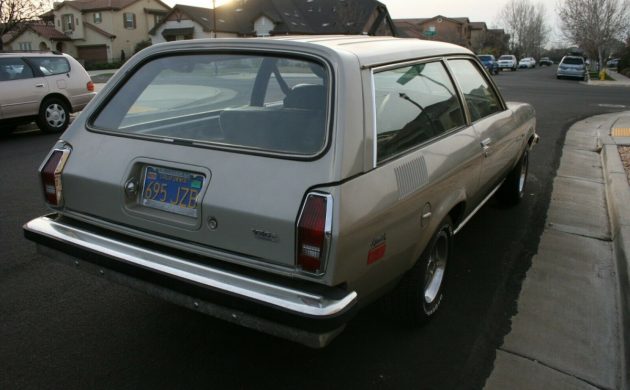
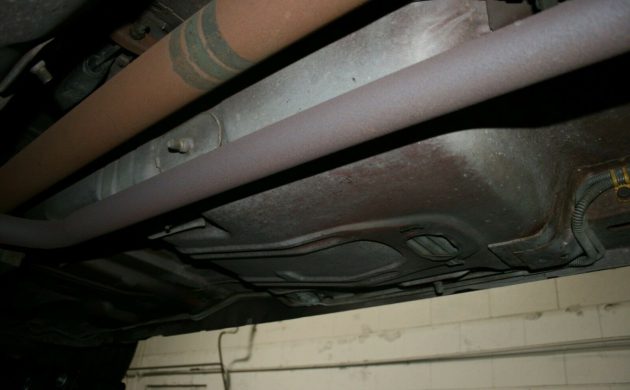
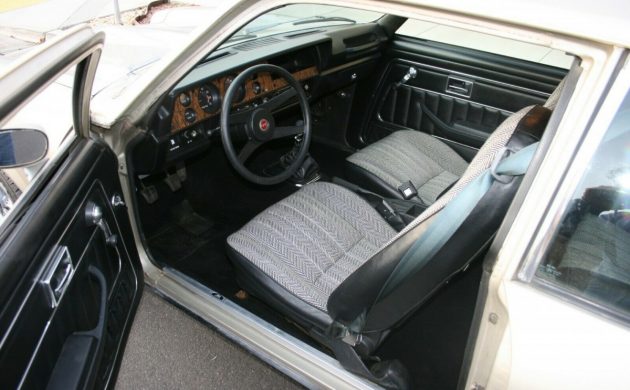
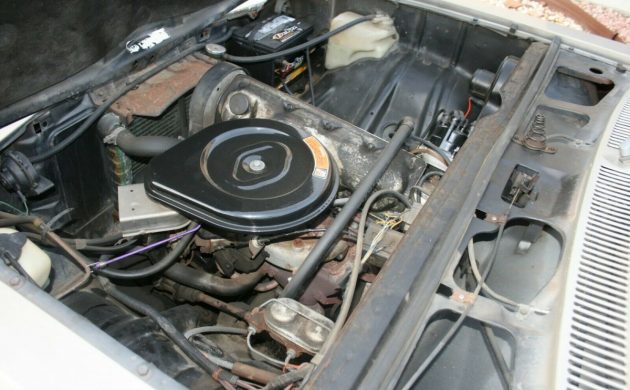
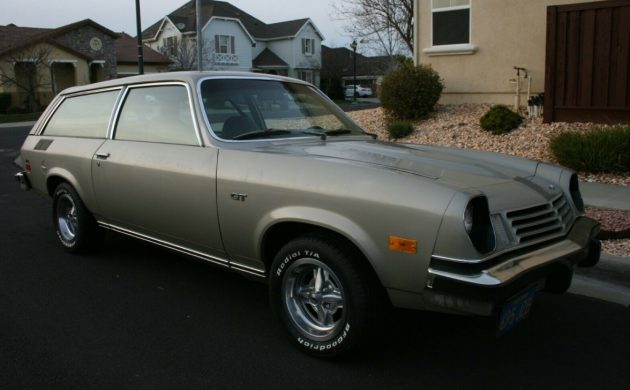


Another sharp, well preserved Vega surfaces! Although there will be many detractors, there were some people who had good experiences, and have fond remembrances of GM’s poorly executed small car. At least the styling was good. This original car will soon go to a new owner! GLWTA!! :-)
My bud has the same Vega he bought as a young man starting out as a adult,always garages! He did have it all redone and even the underneath painted to match(showcase quality)Of course it now has a bigger heart,,350 transplant! Out of all of my friends,he is the only one who 100% took car of his car with no abusive treatment.
FYI, blue plates aren’t a thing. The rusty 1972 Oldsmobile that I drove to Calif when I moved there in 1980 was assigned blue plates.
I think it’s more about the car having it’s original plates. The 6-digit sequence fits for the mid-70’s, so if it came in from out of state, they’d be a different sequence.
Take a joke??
Please explain what Blue Plate and Black Plate mean, thanks.
@ Edwards Keith, The colour of the number plate on vehicles in California and when issued.
I’ll start in 1956, when Ca. changed out all license plates to “standard size”(6 in X 12in). Starting in ’56 Ca. used a yellow plate with black letters/numbers. 57-62 used “stickers” to denote updated Reg.
In ’63, again all plates updated to black/ with yellow letter/numbers. “real” 63 plates have “63” stamped into the steel in the right hand “sticker well’. From 64 on, again “stickers” are used for currant year “reg.” (FYI at some time in the’70s Calif. went to a “staggered” renew system, more later)
About 70-71 the blue plates started(blue w/yellow num/letters. Exact date for the start of blue plate would depend on many things. Most times a local Vehicle Reg. office would use up the stock of old black plates. Generally the plate would sort of mach when the cars was sold. Example; My mother had a ’64 Buick, her plate was “ESQ ***”, while my 69 Nova had XGE***. Black plate format was “SAM123, Blue was 123SAM. In the early 80′ Calif went to a 7 space format (1SAM123). As of 2021, we are at 8Txx123
The unique thing about California is that when a car is sold, the plates stay with the car and plates are not routinely replaced. As a result, if a car is sold new in California and never leaves the state, it will carry its original plates. This offers good evidence that a car has spent its entire life warm and dry in California.
Very nice and very rare. A friend of mine purchased a Cosworth Vega year ago and still has the dam thing.
These are the stock Vega GT styled-steel wheels and trim rings.
They look good, and they are 1/2″ wider than the base car’s wheels.
I love it! Had a ’72 Kammback and what I remember most was the quick steering and great handling. During my test drive I drove right up on a yard because it turned so quickly. I was used to a ’67 chevelle. Yes, the head gasket eventually went bad, but an easy fix and this was only the first of three I owned. Did go the 262″ V8 route and ran right with the 5.0 Mustangs!
Love this! My mother had this exact same car in Hugger Orange with black stripes. It was the first car I drove. Wish I had the cash to buy this, and throw a mild 350 in it. I remember a tire dealer telling her that to get replacement white-letter tires was going to be expensive. They were wide, but not tall, almost like trailer tire. Lastly, great to see one of these, as I figured so many of the Vegas disappeared because of their use in Pro Stock racing in the 70s
Just for kicks I google 2020 Camaro 2.0 turbo four cylinder engine . I thought perhaps instead of a V-8 conversion stay with a 4 banger. WOW technology has come a long way. 275 HP and something like 265 lbs of torque. Choice of six speed or 8 speed automatic.. Find a 2016 or newer Camaro and do a swap. Plus retain 29 to 30 mpg with AC., power steering. Come on Powerball.
275 HP, 265 lbs of torque and a six speed? That’s the Vega (ideally) they should have built to begin with. Would love to see that done here.
I totally agree with the 4 or 6 cyl engine and tranny upgrade , many choices out there to please anyone
I wouls go with turbo engine and multi speed auto with steering thumb shifting , injection , real brakes and all but i too have to wait for powerball!
The stock radiator is too small for proper cooling, and should be replaced. On a positive note, 1974 was the first year for steel cylinder liners, which helped with longevity.
Great feature Adam!
Bidding is approaching $9,000. I think these are stylish little cars. But people just have to realize how slow they were. They took 19 seconds to complete the quarter mile and around 12.5 seconds to hit 60. There is no vehicle that slow sold today except the cheap and nasty Mitsubishi Mirage, which everyone hates and which can be had for less than 9k new with manufacturer rebates and dealer desperation.
So unless you modify this, substantially, it will not be quick. I mean, it’s not the slowest car from the era. It’s practically like a Challenger Hellcat compared to an Olds Gutless with the 260 for example. But I’m afraid those unfamiliar might just get taken in with the looks and not consider the performance.
Auction over. A last minute budding war led to $10,625 for a nice but not super low mileage Vega. I never thought I would see the day. Wow.
SOLD for $10,623.
Can’t even paint a car correctly for $10K. Well bought.
Looking for a Vega Panel Truck version of this car. My brother had one new I believe in either 71 or 73?
Very cool.
When I was in high school in Corpus in the mid 70s, a v8 Vega camback was the fastest car in town
Always thought of Vegas as baby cameros. they followed big brothers styling pretty closely.